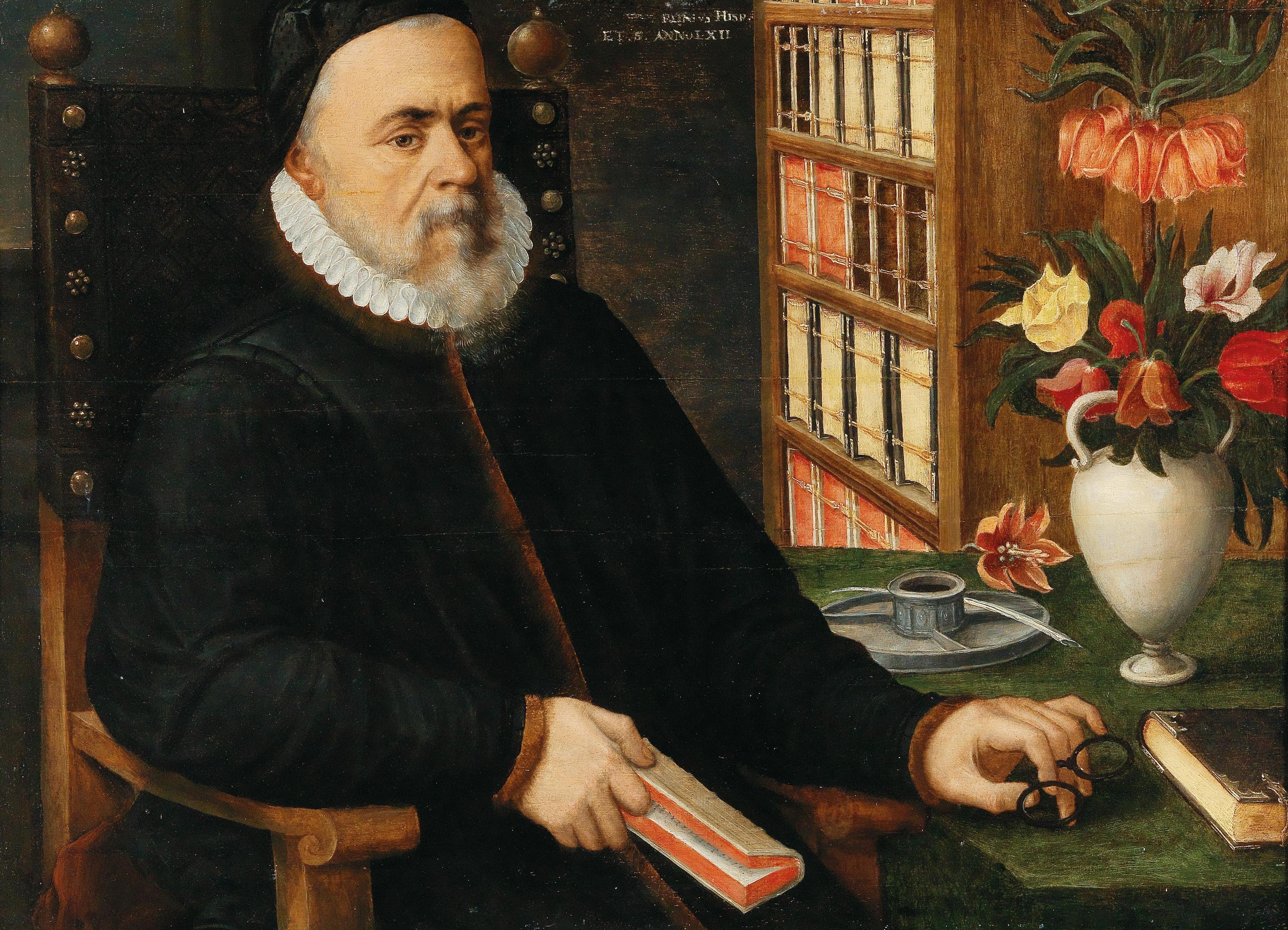The legendary Tower of Babel, a massive, pyramid-like circular structure, towers over a vast, multifaceted landscape consisting of several different geographical regions. In its complicated, multi-shell construction, the gigantic tower is reminiscent of two famous Tower of Babel paintings by Pieter Bruegel the Elder, without whose model this depiction would be inconceivable.
The building is already inhabited on all floors, which are connected by countless staircases, and the impression is created that it contains the diverse life of an entire city within its walls. In the darker foreground, the legendary King Nimrod, the builder of the tower, can be seen under a parasol with his entourage. He is inspecting the workers involved in numerous different trades in the completion of the building. The group of stonemasons in the foreground on the right stands out because of their strangely disproportionate and antique-looking body shapes compared to the surrounding figures, which reveal influences of Venetian painting.
Depictions of the Tower of Babel were one of the most popular and sought-after subjects in landscape painting north of the Alps at the turn of the 17th century. The Biblical story of the building of the tower (Genesis 11:1-9) has an existential dimension, for the structure reaching "up to heaven" is a symbol of the failure of humanity in its efforts to measure up to God. The focus here is not on the destruction of the tower or the dispersion of humanity, however, but on the collective striving for the completion of a structure that surpasses all human measure and claims to be like God. The formal allusion to the ancient Colosseum in Rome was understood by Valckenborch's contemporaries. Apparently, it was also interpreted as an attack on the Roman papacy, which had degenerated in the Babylonian sense and was certain of God's rightful punishment.
We present today's painting thanks to the Staatliche Kunstsammlungen in Dresden. : )
P.S. Here are the most famous Towers of Babel in art!


 Marten Valckenborch
Marten Valckenborch